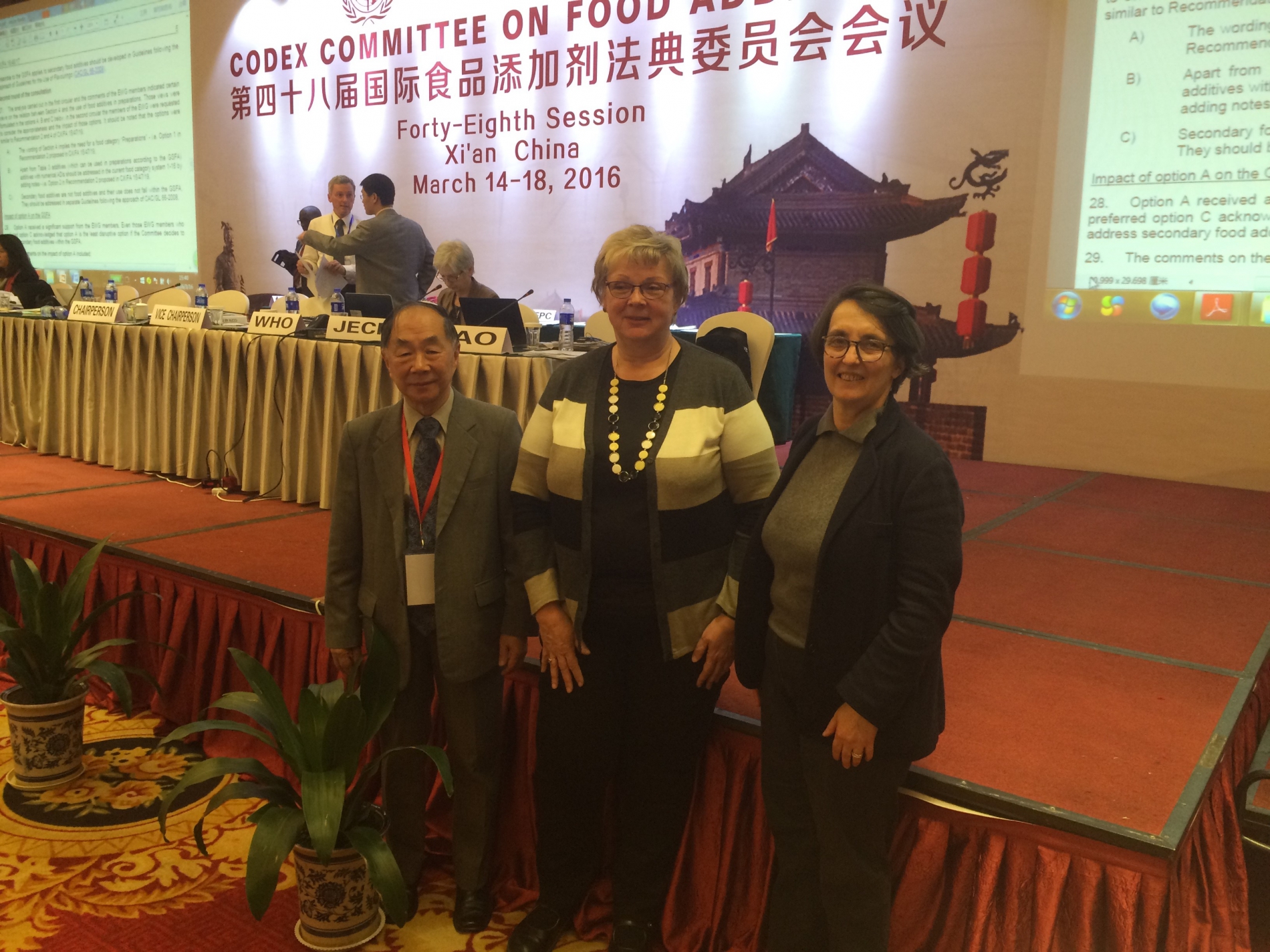For this session, OIV President Prof. Dr. Monika Christmann led the OIV delegation, which also comprised the OIV Scientific Coordinator, Dr Jean-Claude Ruf.
Among the various items on the agenda, one particular point concerned food additives and the applicable provisions in food category 14.2.3 (Grape wines) and its sub-categories.
For grape wine, which forms part of Annex 3, the additives that are approved for use in the “Grape wines” category and its sub-categories should be evaluated on a case-by-case basis.
In 2015, the Committee agreed to establish an electronic working group to study the reasons for the gap between members in favour of listing additives with numerical maximum limits versus Good Manufacturing Practices (GMP), with the purpose of proposing a common approach. Four issues of concern regarding the use of additives in grape wines were defined: wine identity, wine stability, the global applicability of limits and innovation in the wine sector.
With the aim of reaching an agreement, a common approach was proposed to set limitations for wine additives as GMP, while making reference to internationally recognised bodies with expertise in establishing GMP for these additives. However, although many members proposed referring to the OIV, no consensus was found in this regard.
After long discussions and in the absence of an agreement, the Committee approved the recommendation to establish an electronic working group co-chaired by the European Union and Australia. The purpose of this group will be to develop a discussion paper for the next session containing the various recommendations and analyses vis-à-vis possible amendments to the Codex General Standard for Food Additives (GSFA) for the “Grape wines” category.
At the same time as these discussions, the President of the OIV developed contacts with the representatives of numerous delegations, as well as with those of the FAO and of the JECFA, and with the Secretariat of the Codex Alimentarius.
[EN] OIV Comments on grape wine issue - CRD 19
[EN] OIV Statement in session - CRD 34
